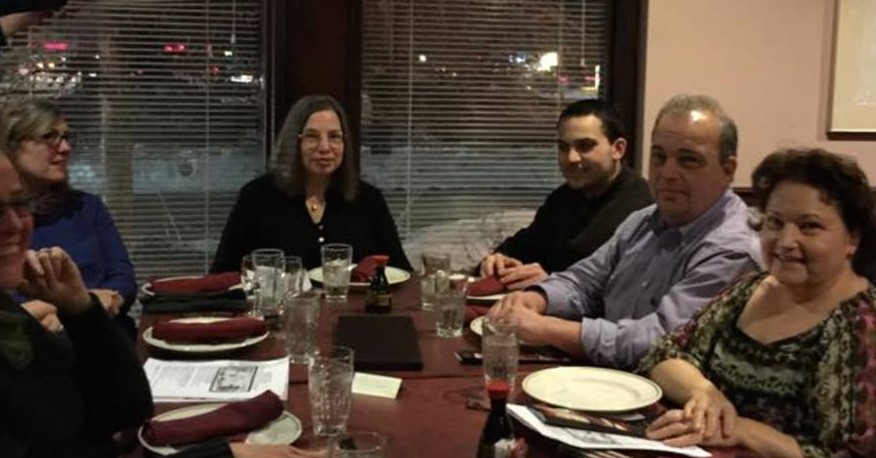Autism is a developmental delay. This is particularly important when it comes to our youth who are at the age typical youth graduate from high school and launch into their adult life. Typically developing youth are ready to go off to college or become employed in a full time job upon high school graduation. For a few, this happens immediately upon high school graduation, but for most it takes another process where they work a job, attend higher education, and move away from the family home – either all at once or a little at a time so that over the next few years the high school graduates find their starting place in the big wide world.
For our youth with autism, because of the developmental delay, that launching takes different trajectories. For some, attending high school as a special education student in the age 18-21 category allows for further skill development and potential job placement. This is great if the job placement is looked at as a first job.
We have all had our first jobs where we learned all about the world of work – about things such as being on time, arriving at work ready to engage in the job, managing our personal and social lives outside of work hours, how to fit in and have conversation with the various groups of people (co-workers versus the boss) along with all the other numerous learning experiences our first job afforded us.
What I see happen all too often with our 18-21 year old special education students who remain in high school and who are supported in their first job is that first job is thought of as the end of the story. What should be a first job experience often comes with an assumption that it is a life long job placement. This is wrong on ever so many levels. Just think back to your first job and consider how rewarding and fulfilling it would be if someone else decided that would be your job for life.
Another problem our students with autism face is they are most often put into job programs along with other students with developmental delays without consideration of their cognitive ability. This matters. For developmental delays other than autism, cognitive ability (as measured by intelligence scores) is typically lower than average. Individuals with autism may have less than normal intelligence scores, but they are just as likely to have normal and even above normal intelligence. And yet, because of autism, they also have a significant developmental delay. Shredding paper, wiping down tables in fast food places, or other similar jobs might be a good first job, but will not likely be a satisfying life long job for someone of normal or above normal intelligence. Because our job programs for students with developmental delays are geared towards those who also have significantly decreased cognitive abilities, the programs are often poor matches for students with autism.
The developmental delay in autism also looks different across adulthood than it does for those with intellectual disability. People with autism get their diagnosis due to differences in social, sensory and communication areas. These delays in childhood often show improvement in individuals across the lifespan. This is different than intellectual disability where IQ is fixed and does not improve over the lifespan. Autism is a developmental delay. It is not stagnation! Youth and young adults with autism continue to make gains develop over the lifespan.
To improve across the lifespan, the areas affected by autism – social, sensory and communication – are the areas that need to be addressed in transition programming for our youth with autism. All the employment and independent living skills need to be taught with this in mind. I co-authored the book The Hidden Curriculum of Getting and Keeping a Job: Navigating the Social Landscape of Employment to address some of the areas our youth with autism need in order to be successful.
Something happening right now in my corner of the world to assist youth with autism to transition from high school and to eventually take their place in the world is a project called Meaningful Employment at Common Threads near Madison, WI. This project was chosen as a finalist for the State Farm Neighborhood Grant. The winners of this $25,000 grant will be chosen by popular vote on Facebook. The top 40 of the 200 finalists will each receive the $25,000 to use for their project. We desperately want to be in the top 40. We plan to purchase the startup equipment for a licensed commercial kitchen. This is a natural next step for our transition programming to afford those in our cooking class to be supported in the next step – getting their first job!
Please vote for our project. We are currently at 54 on the leader board. Help us make it into the top 40 by voting each day through June 3, 2015 – remember to check the box to give us all ten votes each day you vote.
To vote: First get onto your Facebook account and then use this link
NOTE: The voting is now over.
Please pass around to any person or group on Facebook who might be interested in helping us make a difference when it comes to employment for youth with autism. Know that I thank you from the bottom of my heart!
Sincerely,
Judy Endow
BOOKS BY JUDY ENDOW
Endow, J. (2019). Autistically Thriving: Reading Comprehension, Conversational Engagement, and Living a Self-Determined Life Based on Autistic Neurology. Lancaster, PA: Judy Endow.
Endow, J. (2012). Learning the Hidden Curriculum: The Odyssey of One Autistic Adult. Shawnee Mission, KS: AAPC Publishing.
Endow, J. (2006). Making Lemonade: Hints for Autism’s Helpers. Cambridge, WI: CBR Press.
Endow, J. (2013). Painted Words: Aspects of Autism Translated. Cambridge, WI: CBR Press.
Endow, J. (2009). Paper Words: Discovering and Living With My Autism. Shawnee Mission, KS: AAPC Publishing.
Endow, J. (2009). Outsmarting Explosive Behavior: A Visual System of Support and Intervention for Individuals With Autism Spectrum Disorders. Shawnee Mission, KS: AAPC Publishing.
Endow, J. (2010). Practical Solutions for Stabilizing Students With Classic Autism to Be Ready to Learn: Getting to Go. Shawnee Mission, KS: AAPC Publishing.
Myles, B. S., Endow, J., & Mayfield, M. (2013). The Hidden Curriculum of Getting and Keeping a Job: Navigating the Social Landscape of Employment. Shawnee Mission, KS: AAPC Publishing.
Common Threads Family Resources Center, located minutes from Madison, WI, offers school and mental health programs geared toward individuals affected by autism, behavioral disorders, and mental health challenges. Our experienced and talented team of professionals creates a daily environment of acceptance and growth where students and clients flourish. http://www.commonthreadsmadison.org
State Farm Neighborhood Assist is a crowd-sourced philanthropic initiative that lets communities determine where grant funding is awarded, exclusively through Facebook. The initiative utilizes the State Farm Youth Advisory Board to vet submissions for causes and allows Facebook users who download the free State Farm Neighborhood Assist application to vote for the final 40 grant winners. The program has been inspired by the incredible number of neighborhoods that are coming together to solve a problem or improve their community.




